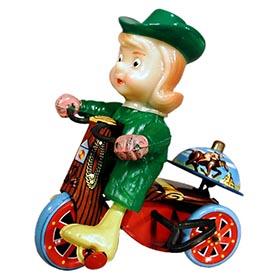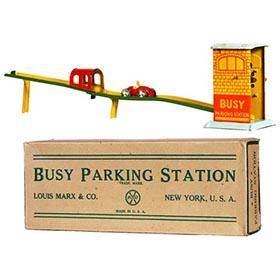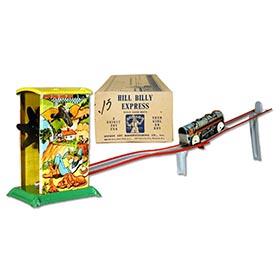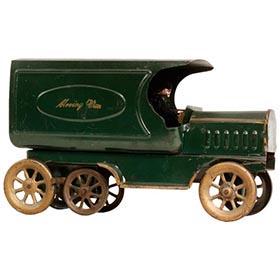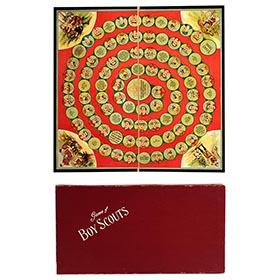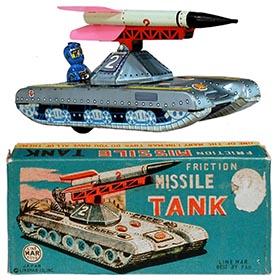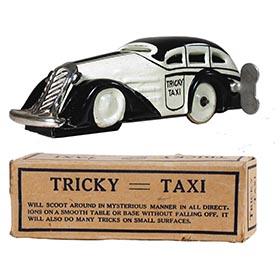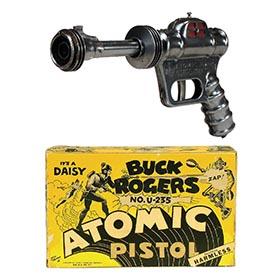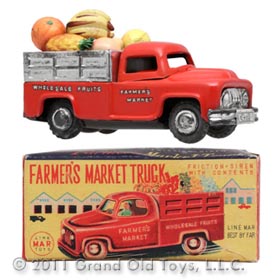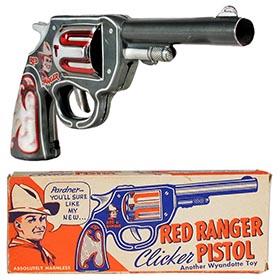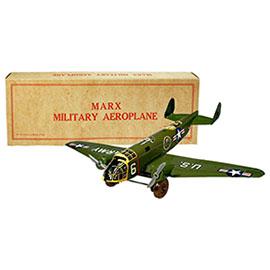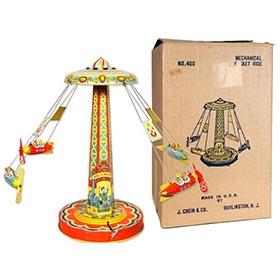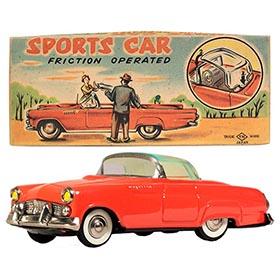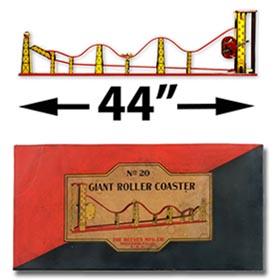1922 American Flyer Box Cab Locomotive, Mail & Pullman Cars

Greenberg's Guide To American Flyer Prewar O Gauge Trains My research into this early, unusual, and possibly unique train set disclosed many other characteristics that are specific ONLY to this set. This is the three-piece American Flyer Box-Cab Locomotive produced from 1922 to 1925. The locomotive and cars were only sold separately. During those three years the locomotive was produced in 9 variations, however this example is the earliest known version. It is unsold store stock, played with just very slightly by the store owner. It came directly out of Neiswinter's Pharmacy in Palmyra, PA which, in addition to standard pharmacy stuff, also sold toys. I purchased it from the estate of the pharmacist who owned and ran the pharmacy. Apparently he took it home and stored it in his attic many years ago. My guess is it was unsellable due to its excessive original retail price. All three pieces; locomotive, baggage car, and pullman are in their original boxes. It's also interesting to note that the second, but just as scarce version of the locomotive appears on the front cover of the Greenberg's Guide. No. 3020 Electric Box Cab Locomotive It's made primarily of cast iron with die cast metal, and plate steel details. It has the unusual feature of separate "pilot trucks" connected at the front and rear making it a 12-wheel locomotive. The trucks extend from each end approximately 2" beyond the locomotive body. It has an automatic track activated reverse bar. It has its original bulbous head lamp with filament still intact. All of the original yellow rubber stamping is 100% complete. Features on this, the earliest 1922 model includes the following: The 2-piece box is made from thick pressed cardboard. The ends of both the top and bottom were taped several times with preprinted red on white tape from Neiswinter's Pharmacy. Size: 12½". Weight 3¼" pounds. No. 3000 United States Post Office Mail Baggage Car (Columbia Series) Brown body, brown roof, black frame and air tanks along the sides. Four sliding doors with die-cast handles. Orange window trim and lettering. Features a unique removable roof section which permits inclusion of a removable wiring kit with light sockets, bulbs, and braid covered wire. The wiring and bulbs were originally sold separately and not included. A small metal rod, looped at the end, protrudes from then end of one side of the car. The loop is pulled to release the socket and permit the roof removal. It also has a small notch on this same end to accommodate the wiring. Only this earliest 1922 Columbia version had these wiring features. A second version called the Illini series did not have electrical capabilities. The car has eight wheels on two trucks. One set has 1" diameter pressed steel wheels mounted onto pressed steel trucks. The second set however, has an undocumented set of smaller #" die cast wheels mounted onto a die cast metal truck. The truck is electrified and wired. A small hard rubber shoe protruding from the base of the truck is intended to make contact with special track. When the shoe is pushed upwards the electric connector automatically opens the coupler for uncoupling. I could find no other example of this feature. The coupler on the opposite end is also possibly unique. It consists of a complicated latch mechanism. No coupler exactly like this was listed in Greenberg's. The 2-pc. box is plain pressed cardboard with pharmacy tape on either end. It is correctly stamped "brown baggage" stamped on one end. Size: 11". No. 3001 Columbia Pullman Passenger Car Like the Baggage car it consists of a brown body, brown roof, orange details around the windows and doors. The frame is black with side air tanks. Doors are open on either end. No less than 16 windows are present on each side. Like the Baggage Car, the Pullman is also capable of being electrified with the separate wiring light bulb kit (not originally included). A metal rod protruding from one end of the car releases the internal bulb socket which allows the roof to be completely removed. It's also notched on the same end to accommodate the wiring. It runs on 8, 1" diameter pressed steel metal wheels connected to identical pressed steel trucks. One coupler is identical to that used on the locomotive. The other coupler is identical to the latch type found on the Baggage Car and is undocumented. The 2-pc. box is plain pressed cardboard with pharmacy tape on either end. It is correctly stamped "brown passenger" stamped on one end. Size: 11½". Sold: Aug. 2011
Price Sold: $ 900
